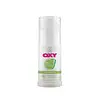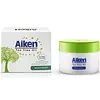What's inside
What's inside
 Key Ingredients
Key Ingredients

 Benefits
Benefits

 Concerns
Concerns

 Ingredients Side-by-side
Ingredients Side-by-side

Water
Skin ConditioningEthylhexyl Methoxycinnamate
UV AbsorberButylene Glycol
HumectantSilica
AbrasiveCyclopentasiloxane
EmollientPolysorbate 60
EmulsifyingBis-Ethylhexyloxyphenol Methoxyphenyl Triazine
Skin ConditioningEthylhexyl Triazone
UV AbsorberAmmonium Acryloyldimethyltaurate/Vp Copolymer
Acrylates/C10-30 Alkyl Acrylate Crosspolymer
Emulsion StabilisingMethylparaben
PreservativeTriethanolamine
BufferingAllantoin
Skin ConditioningChamomilla Recutita Flower Extract
MaskingPropylparaben
PreservativeDisodium EDTA
Aroma
Sodium Hyaluronate
HumectantWater, Ethylhexyl Methoxycinnamate, Butylene Glycol, Silica, Cyclopentasiloxane, Polysorbate 60, Bis-Ethylhexyloxyphenol Methoxyphenyl Triazine, Ethylhexyl Triazone, Ammonium Acryloyldimethyltaurate/Vp Copolymer, Acrylates/C10-30 Alkyl Acrylate Crosspolymer, Methylparaben, Triethanolamine, Allantoin, Chamomilla Recutita Flower Extract, Propylparaben, Disodium EDTA, Aroma, Sodium Hyaluronate
Water
Skin ConditioningEthylhexyl Palmitate
EmollientGlycerin
HumectantDipropylene Glycol
HumectantDimethicone
EmollientCyclopentasiloxane
EmollientCyclohexasiloxane
EmollientPolyacrylate-13
Methyl Methacrylate Crosspolymer
Ethylhexyl Methoxycinnamate
UV AbsorberAllantoin
Skin ConditioningDimethicone Crosspolymer
Emulsion StabilisingMelaleuca Alternifolia Leaf Oil
AntioxidantCarbomer
Emulsion StabilisingBisabolol
MaskingSodium Hydroxide
BufferingDisodium EDTA
Biosaccharide Gum-1
HumectantButylene Glycol
HumectantGlycyrrhiza Glabra Root Extract
BleachingSalicylic Acid
MaskingParfum
MaskingPhenoxyethanol
PreservativeChlorphenesin
AntimicrobialWater, Ethylhexyl Palmitate, Glycerin, Dipropylene Glycol, Dimethicone, Cyclopentasiloxane, Cyclohexasiloxane, Polyacrylate-13, Methyl Methacrylate Crosspolymer, Ethylhexyl Methoxycinnamate, Allantoin, Dimethicone Crosspolymer, Melaleuca Alternifolia Leaf Oil, Carbomer, Bisabolol, Sodium Hydroxide, Disodium EDTA, Biosaccharide Gum-1, Butylene Glycol, Glycyrrhiza Glabra Root Extract, Salicylic Acid, Parfum, Phenoxyethanol, Chlorphenesin
 Reviews
Reviews

Ingredients Explained
These ingredients are found in both products.
Ingredients higher up in an ingredient list are typically present in a larger amount.
Allantoin is a soothing ingredient known for its protective and moisturizingg properties. Because of this, it is often added to products with strong active ingredients.
Studies show higher concentrations of this ingredient can promote wound healing.
Though it can be derived from the comfrey plant, allantoin is produced synthetically for cosmetic products to ensure purity.
Learn more about AllantoinButylene Glycol (or BG) is used within cosmetic products for a few different reasons:
Overall, Butylene Glycol is a safe and well-rounded ingredient that works well with other ingredients.
Though this ingredient works well with most skin types, some people with sensitive skin may experience a reaction such as allergic rashes, closed comedones, or itchiness.
Learn more about Butylene GlycolCyclopentasiloxane, or D5, is a silicone used to improve texture of products and trap moisture.
D5 is considered lightweight and volatile. Volatile means it evaporates quickly after application. Once evaporated, D5 leaves a thin barrier that helps keep skin hydrated.
It is also an emollient. Emollients help soften the skin and prevent water loss. Silicones create a silky texture in products. D5 helps other ingredients become more spreadable.
Studies show D5 is safe to use in skincare products. We recommend speaking with a skincare professional if you have concerns.
Learn more about CyclopentasiloxaneDisodium EDTA plays a role in making products more stable by aiding other preservatives.
It is a chelating agent, meaning it neutralizes metal ions that may be found in a product.
Disodium EDTA is a salt of edetic acid and is found to be safe in cosmetic ingredients.
Learn more about Disodium EDTAEthylhexyl Methoxycinnamate is an organic compound that provides UVB protection. It often goes by the more common name of octinoxate. It is created from methoxycinnamic acid and 2-ethylhexanol.
Ethylhexyl Methoxycinnamate absorbs UVB rays with wavelengths between 280-320 nm. UV absorbers protect your skin by using chemical reactions to convert UV rays into heat and energy.
UVB (290-320 nm) rays emit more energy than UVA rays. They are capable of damaging DNA, causing sunburns and are thought to be linked to skin cancer.
The state of Hawaii has banned sunscreens containing octinoxate due to its potential impact on coral reefs. More research is needed to bridge gaps in this research. The European Union allows higher levels of octinoxate in sunscreens than the US and Australia.
Ethylhexyl Methoxycinnamate is oil soluble. It is not stable and may lose efficacy when exposed to sunlight.
Learn more about Ethylhexyl MethoxycinnamateWater. It's the most common cosmetic ingredient of all. You'll usually see it at the top of ingredient lists, meaning that it makes up the largest part of the product.
So why is it so popular? Water most often acts as a solvent - this means that it helps dissolve other ingredients into the formulation.
You'll also recognize water as that liquid we all need to stay alive. If you see this, drink a glass of water. Stay hydrated!
Learn more about Water